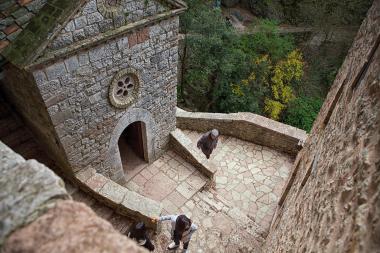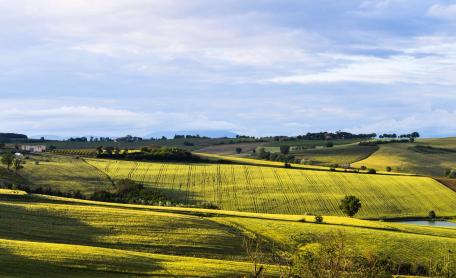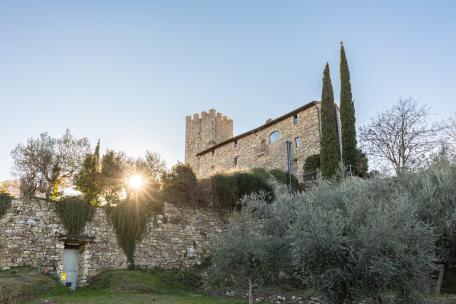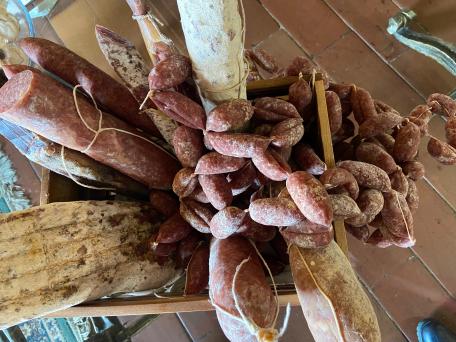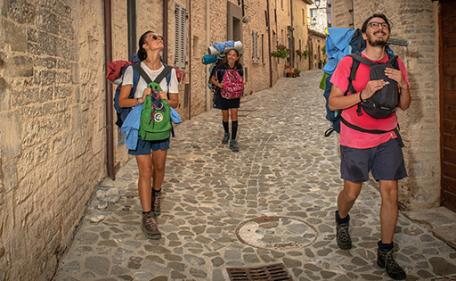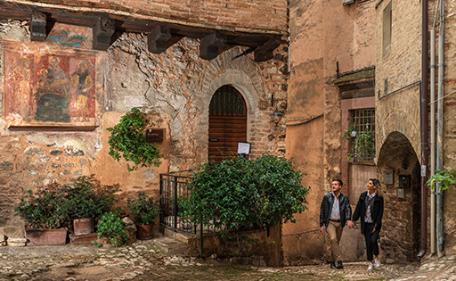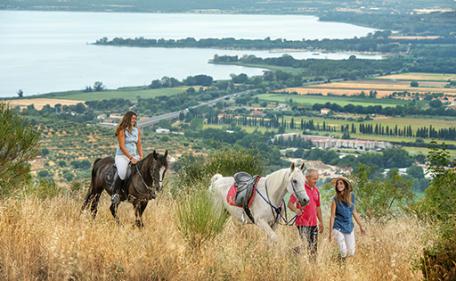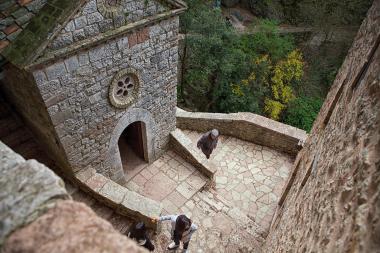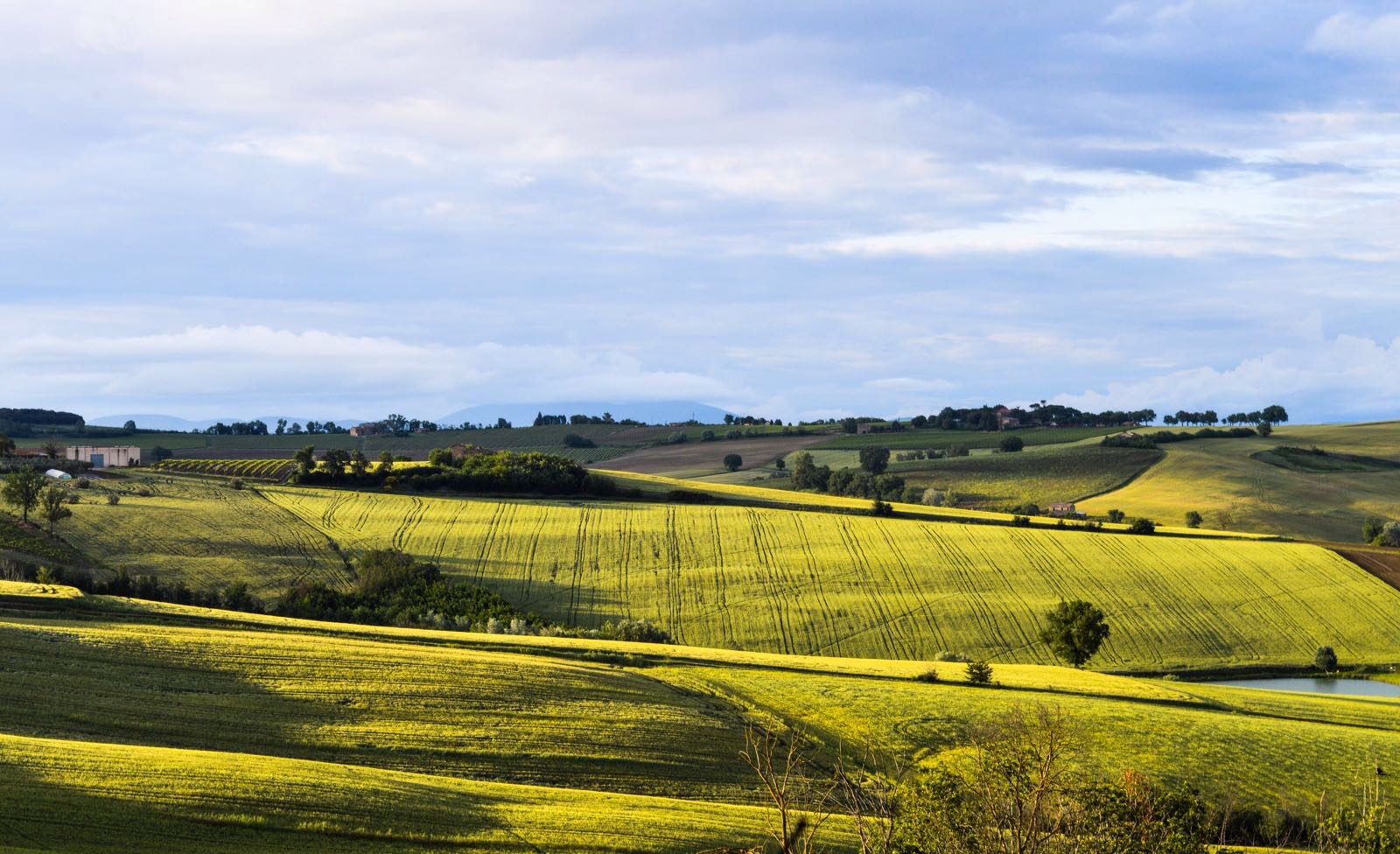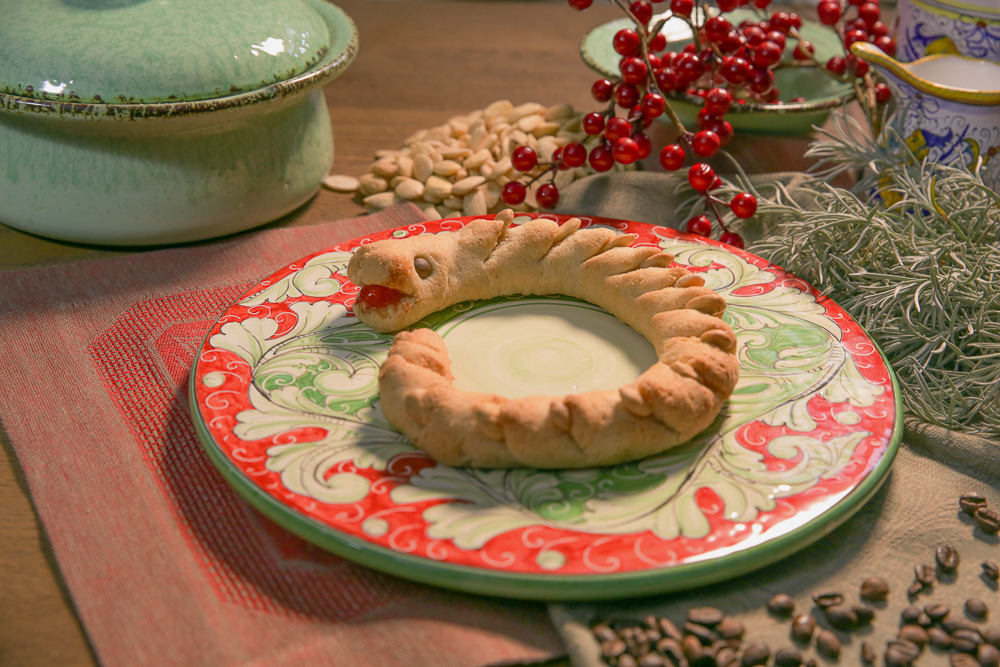HISTORY
The earliest traces of settlement in the area go back to the Neolithic Age, based on findings near Montione. In Roman times the village was under the municipium of Todi. The oldest report of Fratta Todina is found in a document from 1177, when Frederick Barbarossa descended into Italy. In the period of the independent communes, during the fights between the Guelfs (Perugia-Orvieto) and Ghibellines (Todi-Amelia-Spoleto), Fratta was attacked many times by Orvieto and Perugia. In 1310, during the battle of Montemolino, Perugia was victorious and destroyed the bridge that connected the two banks of the Tiber. The climate of hostility and the continuous sacks, burning and devastation brought about the transformation of the center from a villa to castrum. Defensive walls were built in the 14th century, but it was Braccio Fortebraccio da Montone who in the 15th century enlarged the castle and fortified it according to a precise urban military design. Following the seigniory of the Fortebracci, it came back under the sphere of Todi, and enjoyed its golden age during the latter half of the 1500s, thanks to Bishop Angelo Cesi, who established an annual free fair, today revived with the Feast of St. Michael Archangel (8 May). The bishop also opened a new gate in the walls, Porta della Spineta, changing the castle's urban structure, transforming his residence into a splendid villa and donating a residence to the community for public assemblies (now the Town Hall). In the first half of the 1600s his work was continued by Cardinal G.B. Altieri.
ART, CULTURE, ENVIRONMENT
A number of recently restored buildings and monuments can be admired in the historic center: part of the castle defensive walls, built in the 13th and 14th centuries; the Bishop's Palace (17th century) and the Parish Church (1654), built by Cardinal Altieri opposite the older Church of San Savino incorporated into Palazzo Altieri, of which the apse and other traces next to the bell tower can still be seen. Inside, there is a fine Deposition by Andrea Polinori (1612), a copy of the painting (by Barocci) in the Cathedral of Perugia. Palazzo Altieri, the most imposing architectural work in Fratta Todina, was originally built in the latter half of the 16th century by the bishop Angelo Cesi. Between 1643 and 1654 Cardinal G.B. Altieri brought the palazzo to its greatest splendor, enlarging and enriching it with gardens with imaginative plays of water. The palazzo has a gallery with frescoes from the Roman school depicting biblical scenes, with a small loggia looking out over a fountain. Worthy of a visit nearby is the Convent of di Santa Maria della Spineta, an old Franciscan convent, from which there is an enchanting view of the entire Tiber Valley, from Perugia to Todi. The cloister dates from 1394, while the present-day Church of the Vergine Assunta is from the late 18th century. It once held a Nativity by Spagna (now in the Vatican Museums), a copy of which can be found in the hall of the Municipal Council. From Spineta one reaches the Peglia mountains and other small, fascinating villages.


